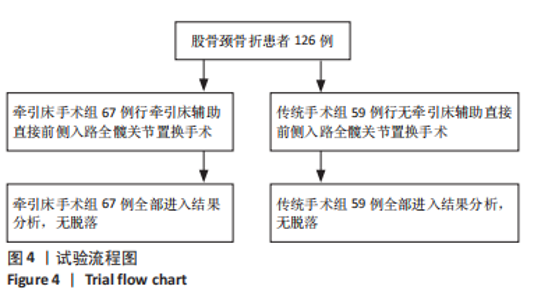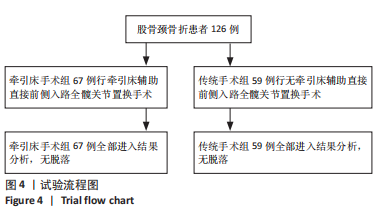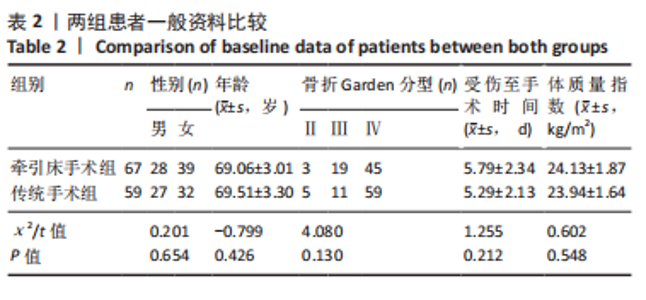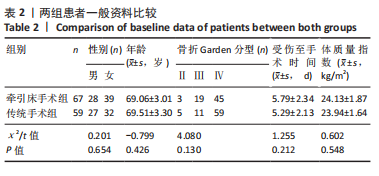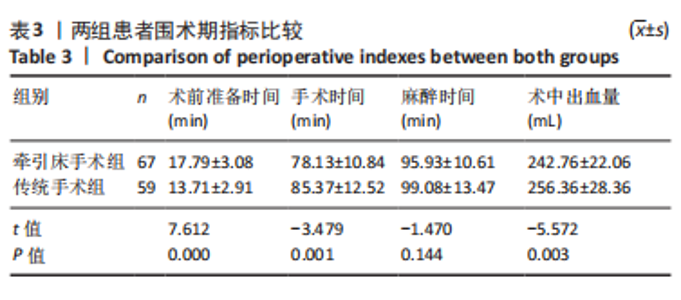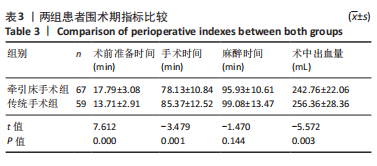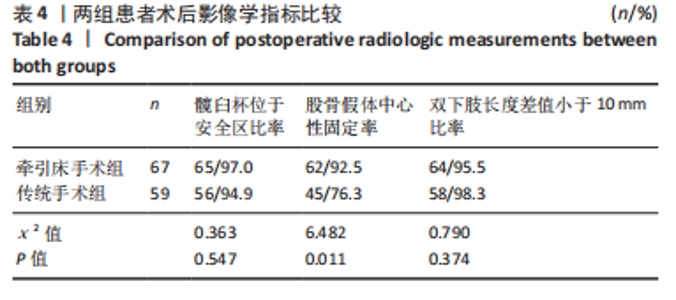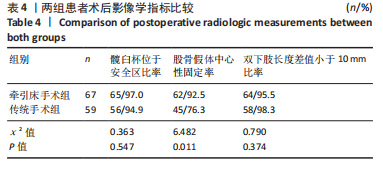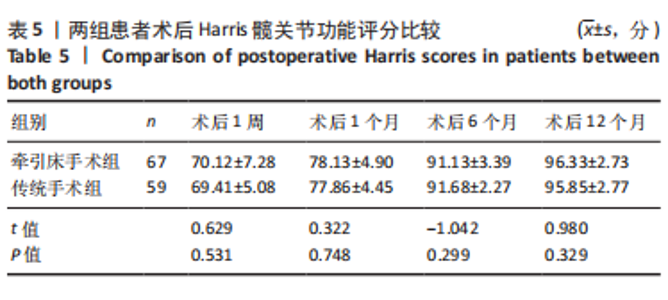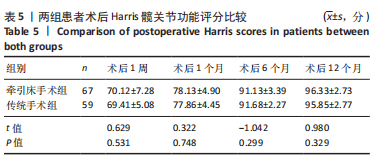[1] 赵丽坤,崔爽爽,马剑雄,等.成年股骨颈骨折临床特征分析:一项基于医院的回顾性研究[J].中华骨科杂志,2021,41(3):157-164.
[2] LIU Y, CHEN X, ZHANG P, et al. Comparing total hip arthroplasty and hemiarthroplasty for the treatment of displaced femoral neck fracture in the active elderly over 75 years old: a systematic review and meta-analysis of randomized control trials. J Orthop Surg Res. 2020;15(1): 215.
[3] 张兴,徐中华,谢华,等.高龄股骨颈骨折行SuperPATH入路髋关节置换的短期随访[J].中国组织工程研究,2019,23(36):5777-5781.
[4] 李骏然,李力更,翟婧秀,等.微创直接前侧入路与后外侧入路全髋关节置换术治疗老年人股骨颈骨折的早期临床疗效对照研究[J].中华解剖与临床杂志,2021,26(2):182-187.
[5] DOLATOWSKI FC, FRIHAGEN F, BARTELS S, et al. Screw Fixation Versus Hemiarthroplasty for Nondisplaced Femoral Neck Fractures in Elderly Patients: A Multicenter Randomized Controlled Trial. J Bone Joint Surg Am. 2019;101(2):136-144.
[6] 刘天盛,苏彬.直接前入路全髋关节置换的优势及学习曲线[J].中国组织工程研究,2020,24(27):4364-4370.
[7] NAKAMURA J, HAGIWARA S, ORITA S, et al. Direct anterior approach for total hip arthroplasty with a novel mobile traction table -a prospective cohort study. BMC Musculoskelet Disord. 2017;18(1):49.
[8] WERNLY D, WEGRZYN J, LALLEMAND G, et al. Total hip arthroplasty through the direct anterior approach with and without the use of a traction table: a matched-control, retrospective, single-surgeon study. J Orthop Surg Res. 2021;16(1):45.
[9] SEHAT KR, EVANS R, NEWMAN JH. How much blood is really lost in total knee arthroplasty? Correct blood loss management should take hidden loss into account. Knee. 2000;7(3):151-155.
[10] LEWINNEK GE, LEWIS JL, TARR R, et al. Dislocations after total hip-replacement arthroplasties. J Bone Joint Surg Am. 1978;60(2):217-220.
[11] NAKATA K, NISHIKAWA M, YAMAMOTO K, et al. A clinical compara-tive study of the direct anterior with mini-posterior approach: two consecutive series. J Arthroplasty. 2009;24(5):698-704.
[12] MAHMOOD SS, MUKKA SS, CRNALIC S, et al. The Influence of Leg Length Discrepancy after Total Hip Arthroplasty on Function and Quality of Life: A Prospective Cohort Study. J Arthroplasty. 2015;30(9): 1638-1642.
[13] WAMPER KE, SIEREVELT IN, POOLMAN RW, et al. The Harris hip score: Do ceiling effects limit its usefulness in orthopedics? Acta Orthop. 2010;81(6):703-707.
[14] GUYEN O. Hemiarthroplasty or total hip arthroplasty in recent femoral neck fractures? Orthop Traumatol Surg Res. 2019;105(1S):S95-S101.
[15] CUI S, WANG D, WANG X, et al. The choice of screw internal fixation and hemiarthroplasty in the treatment of femoral neck fractures in the elderly: a meta-analysis. J Orthop Surg Res. 2020;15(1):433.
[16] 高辉,陈震东.下肢牵引架辅助下前侧微创入路全髋关节置换术治疗髋部疾病的近期疗效[J].中华创伤骨科杂志,2017,19 (5):450-453.
[17] 李骏然,翟婧秀,赵洪波,等.牵引床直接前侧入路人工全髋关节置换术的学习曲线分析[J].中国微创外科杂志,2021,21(11):1024-1030.
[18] MEERMANS G, KONAN S, DAS R, et al. The direct anterior approach in total hip arthroplasty: a systematic review of the literature. Bone Joint J. 2017;99-B(6):732-740.
[19] JUDET J, JUDET R. The use of an artificial femoral head for arthroplasty of the hip joint. J Bone Joint Surg Br. 1950;32(2):166-173.
[20] MATSUURA M, OHASHI H, OKAMOTO Y, et al. Elevation of the femur in THA through a direct anterior approach: cadaver and clinical studies. Clin Orthop Relat Res. 2010;468(12):3201-3206.
[21] JAFFER AK, BARSOUM WK, KREBS V, et al. Duration of anesthesia and venous thromboembolism after hip and knee arthroplasty. Mayo Clin Proc. 2005;80(6):732-738.
[22] 王春成,李明哲.全髋关节置换假体不同角度的生物力学特点[J].中国组织工程研究,2017,21(11):1652-1657.
[23] LIN TJ, BENDICH I, HA AS, et al. A Comparison of Radiographic Outcomes After Total Hip Arthroplasty Between the Posterior Approach and Direct Anterior Approach With Intraoperative Fluoroscopy. J Arthroplasty. 2017;32(2):616-623.
[24] 李咏壑,王献抗,孟昱,等.髋关节置换中短柄假体置入位置差别的力学分析[J].中国组织工程研究,2021,25(15):2394-2399.
[25] MOSLEMI A, KIERSZBAUM E, DESCAMPS J, et al. Does using the direct anterior approach with a standard table for total hip arthroplasty reduce leg length discrepancies? Comparative study of traction table versus standard table. Orthop Traumatol Surg Res. 2021;107(1):102752.
[26] MIHALKO WM, PHILLIPS MJ, KRACKOW KA. Acute sciatic and femoral neuritis following total hip arthroplasty. A case report. J Bone Joint Surg Am. 2001;83(4):589-592.
[27] 查小伟,程文丹,吕浩,等.全髋关节置换直接前入路与后外侧入路患者的早期疗效比较[J].中国组织工程研究,2018,22(35):5583-5589.
[28] HARTFORD JM, BELLINO MJ. The learning curve for the direct anterior approach for total hip arthroplasty: a single surgeon’s first 500 cases. Hip Int. 2017;27(5):483-488.
[29] SARRAJ M, CHEN A, EKHTIARI S, et al. Traction table versus standard table total hip arthroplasty through the direct anterior approach: a systematic review. Hip Int. 2020;30(6):662-672.
[30] HOMMA Y, BABA T, SANO K, et al. Lateral femoral cutaneous nerve injury with the direct anterior approach for total hip arthroplasty. Int Orthop. 2016;40(8):1587-1593.
[31] MACHERAS GA, CHRISTOFILOPOULOS P, LEPETSOS P, et al. Nerve injuries in total hip arthroplasty with a mini invasive anterior approach. Hip Int. 2016;26(4):338-343.
[32] RUDIN D, MANESTAR M, ULLRICH O, et al. The Anatomical Course of the Lateral Femoral Cutaneous Nerve with Special Attention to the Anterior Approach to the Hip Joint. J Bone Joint Surg Am. 2016;98(7):561-567.
[33] 张雨,王斌,秦江辉,等.Bikini切口直接前入路全髋关节置换术的短期疗效[J].中华骨科杂志,2020,40(17):1175-1181.
[34] CHRISTENSEN CP, KARTHIKEYAN T, JACOBS CA. Greater prevalence of wound complications requiring reoperation with direct anterior approach total hip arthroplasty. J Arthroplasty. 2014;29(9):1839-1841.
|
